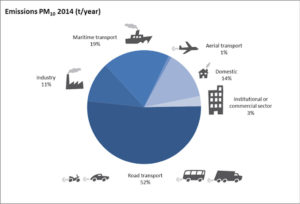Catalonia has joined the BreatheLife campaign, the region joining forces with a growing number of cities, regions and countries to cut air pollution.
The region of 7.5 million residents is already taking action to improve air quality, committed to cutting traffic-related pollution by 30 per cent in 15 years until levels recommended by the World Health Organization are gradually achieved.
This is the overarching goal of the Agreement for Air Quality Improvement, adopted by all administrative governments in the Catalonia region, which outlines a series of commitments to protect human and environmental health.
“What we achieved with the Agreement for Air Quality Improvement is an intangible valued asset, the confidence and the complicity of all the public administrations. What we agreed is very powerful because we do it together, because with coordinated decisions we have greater capacity to truly transform the quality of life of the people which is our ultimate goal.”
Marta Subirà, secretary for Environment and Sustainability
At the centre of its efforts is Barcelona, Catalonia’s largest city and one of the Mediterranean’s most powerful urban areas, which suffers from the classic urban air pollution patterns, including levels of nitrogen dioxide and suspended particulate matter that are persistently above legislated limits.
The Government of Catalonia has declared Barcelona and another 39 municipalities surrounding as an special environment zone (Àmbit-40) because it have persistently exceeded the thresholds established by de European Union legislation for two local pollutants NO2 and PM10.
Barcelona is an important urban agglomeration with a certain industrial implantation but the main contribution to atmospheric pollution corresponds to transport emissions (traffic, port and airport).
The contribution of air pollution sources in the special environment zone are:

On 1 December 2017, new rules that affect traffic and industrial emissions in the Àmbit-40 came into force under the Agreement for Air Quality Improvement in the Metropolitan Area of Barcelona signed in March.
The Catalan government launched Horizon 2020 Action Plan for the Improvement of Air Quality in 2014 to tackle stubbornly high levels of nitrogen dioxide and suspended particulate matter even as other measured pollutants fell to meet permitted standards.
Catalonia has a series of videos on its air quality and efforts to improve it here.
Discover more about Catalonia’s participation in international efforts to reduce air pollution here (for Spanish speakers).